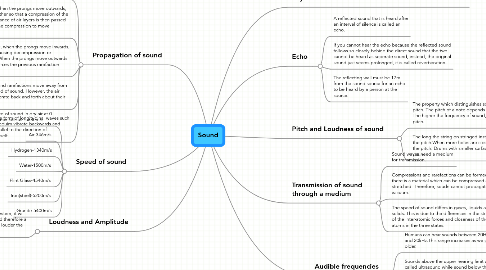Sound
作者:Samuel Lum


1. Propagation of sound
1.1. Sound waves are produced when a vibrating object alternately pushes and pulls on the air adjacent to it, causing small but rapid changes in air pressure.
1.2. Consider a vibrating tuning fork, when the prongs move outwards, layers of air are pushed close together so that a compression of the air particles is formed. This disturbance of air layers is then passed from particle to particle, causing the compression to move outwards.
1.3. Consider a vibrating tuning fork, when the prongs move inwards, the air layers are pulled apart,causing decompression or rarefaction of the air particles. When the prongs move outwards again, a second compression forces the previous rarefaction away.
1.4. A series of compressions and rarefactions move away from the tuning fork at the speed of sound. However, the air particles themselve just vibrate back and forth about their original positions.
1.5. Sound is propagated in the form of longitudinal waves such that the particles of the meduim vibrate backwards and forwards in a direction parallel to the direction of propagation of the wave itself.
2. Speed of sound
2.1. Speed of sound in dry air at 0 degrees celsius is 330m/s
2.2. Air-346m/s
2.3. Hydrogen-1340m/s
2.4. Water-1500m/s
2.5. Flint Glass-4540m/s
2.6. Iron(steel)-5200m/s
2.7. Granite-5400m/s
3. Loudness and Amplitude
3.1. The more energy you put into the vibrating system, it will give rise to a larger amplitude of vibration and therefore a louder sound. The greater the amplitude, the louder the sound.
4. Sound is a form of energy propagated from one point to another as a wave.Sound waves are longitudinal waves which are produced by the vibration of some objects.
5. Transmission of sound through a medium
5.1. Sound waves need a medium for transmission.
5.2. Compressions and rarefactions can be formed only if there is a material which can be compressed and stretched. Therefore, soudn cannot propagate through a vacuum.
5.3. The speed of sound differs in gases, liquids and solids. This is due to the differences in the strength of the inter-atomic forces and closeness of the atoms in the three states.
5.3.1. Compression and rarefactions propagate faster in denser media. Therefore, sound travels faster in liquids than in gases, and fastest in solids.
